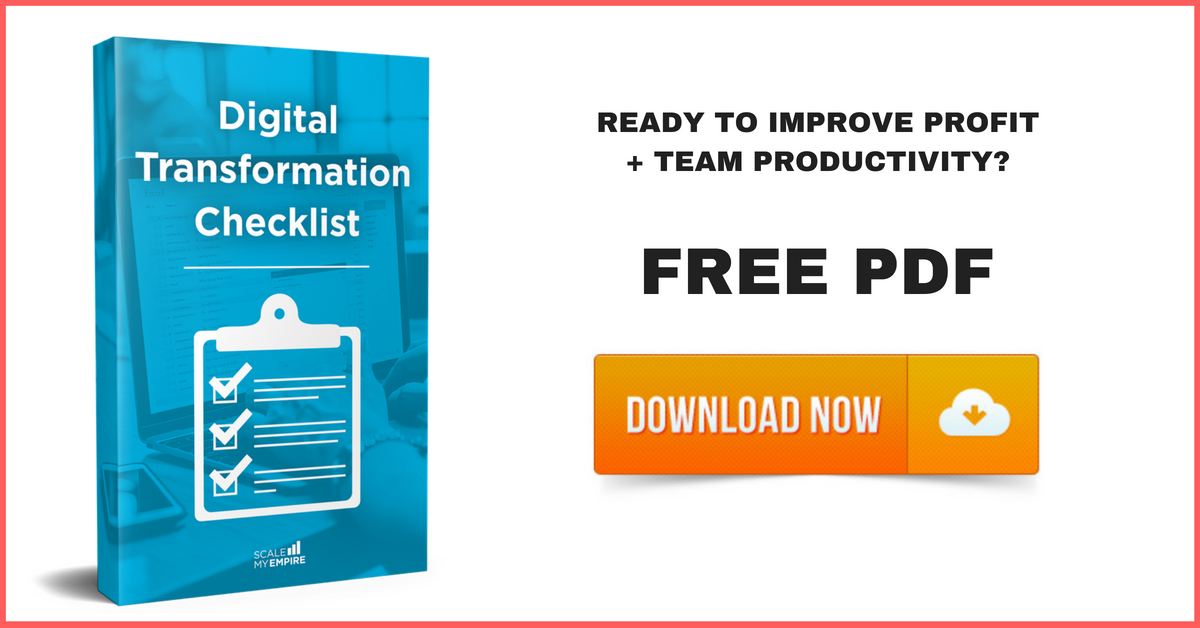
Do you feel like you’re losing control over your expanding business?
This fear is just one of many entrepreneurs have after initially experiencing astronomical business growth.
Unless your business is completely run by robots, the reality is that when you grow your trade, you have to expand your resources to accommodate said growth.
This leads to an increase in costs, especially when personalised project attention begins to disappear and individual lapses of productivity are harder to notice amongst employees of your company.
These and many other problems can lead to a lack of competitiveness which can lead to a plateau in your business’s growth.
You’ve worked your tail off to get your company to where it is, so why forfeit continual growth for problems that can be remedied?
You can curtail these problems by taking into account these five business boosters.
We’ll take a look at these five important steps that you, as an entrepreneur, can use to keep your business running at the same pace once it’s hit a large growth spurt.
Let’s face it: only the best of businesses can experience continual and exponential profits so why can’t your business be the best?
Portrait Of an Entrepreneur Struggling With Growth

Let’s have a look at Anthony, a 45-year old entrepreneur who’s spent years grinding away behind the scenes of his services business, making sure everything is operating synergistically.
Anthony has experienced immense growth in both his profits and his company as a result of his dedication.
He’s now finalising plans to open a second office, located halfway across the state.
Anthony wants to maintain a close, personal relationship with all of his employees, but it’s going to be hard to do such a thing without working twelve hours a day.
Losing personalised relationships with your employees can be a key contributor to stagnant business growth, especially after expansion.
How can you, Anthony, and other growing entrepreneurs stay competitive without personalised relationships in a growing business?
The answer to that question and several others are right below this if you care to keep reading!
Five Surefire Tips to Keep Your Business From Falling Behind
We’ll use real-life scenarios to illustrate the power and simplicity that goes into keeping your business competitive, particularly after expansion.
Tip #1: Creativity Is a Must

When you begin your company’s foray into the unknown, creativity and a will to do that which may be frowned upon is a must.
Let’s start by using the hugely successful fashion outfit, Urban Outfitters, as an example.
When Urban Outfitters began their adventure in the retail clothing industry, they experienced huge success, but it wasn’t that of other similar startup clothing companies.
Urban Outfitters has increased its revenues by 500% in the past 10 years, and that’s largely due to their “think outside the box” mentality and their willingness to challenge the norm.
What does thinking outside the box and challenging the norm have to do with the competitiveness of your business?
It’s simple: both are synonymous with creativity.
For example, when Urban Outfitters first began to take off and expand nationwide, they decided to pursue an alternate path of staffing their management department.
They decided to pursue management staff who had degrees in art or art-related fields, as opposed to individuals who had degrees in areas like business administration.
This caused each of their new stores to look unique and hyper-concentrated on their targeted consumer audience.
They deviated from the conventional path, and boy did it take off!
This, obviously, doesn’t come without risks but a little creativity and a desire to stray off of the beaten path can ensure that your business, upon expansion, stays competitive in the ever-changing world.
In summary, don’t hesitate to create and be bold; your wallet and your company will thank you.
Tip #2: Keep Your Eyes On the Competition

Yes we get it – it’s all the rage with today’s Entrepreneurs to say ‘ignore the competition and innovate’.
But expanding your business into an area that you’ve negligibly researched is like trying to drive a car to a place you’ve never been before without any direction; it’s foolish and almost pointless.
Staying competitive means keeping your eyes on, if possible, all competition in the area you’re considering expanding in.
Even if you’re not expanding to a new area but simply growing your company to sell a new product or service, it’s still important to keep track of what competitors are selling and doing.
Keeping tabs on your company’s competitors can be accomplished through several means, mostly by the use of desk research, competitor analysis, and customer inquiries.
Desk research is pivotal to analyzing your company’s competition because it’s simple; as its name implies, it’s easily done sitting at your desk!
Stop trudging around in the realm of the unknown - know about your competitors from your desk! Click To Tweet
Desk research involves things such as visiting your competitor’s website, checking out their distribution strategies, and analyzing their presence on social media platforms such as Facebook and Twitter.
Customer inquiries are also important when it comes to getting to know the competition you’re potentially going to be up against.
It’s helpful to reach out to your company’s customers through methods such as email surveys and phone calls to gauge what their perception is about your products/services.
Doing so will give you an idea of what things you’ll need to improve on and what things your competition might already be doing that you’re not.
Competitor analysis is a broad term. In the bigger picture, however, we’re talking about analyzing all aspects of your company’s competition such as offline and online companies, the market value of a competitor’s items which are similar to yours, and much more.
For example, you might consider your company’s only rival competitor in terms of proximity. That is, you have in mind a shop that provides similar services as your company that is located in the same city as yours.
In reality, however, you’re competing with much more than just that one shop. What about large online enterprises like Amazon, eBay, and even Craigslist?
All of the aforementioned information is crucial to know in order to keep your business competitive.
Knowledge is power when it comes to business prosperity and knowing your business’s competition down to your type of ideal customer will greatly increase its ability to stay competitive.
Tip #3: Keep Your Company’s Visions Long-Term

When we say this, we’re talking about ensuring that your company has a proper (and realistic) future vision.
Long-term goals can keep your business ahead of the game while simultaneously working towards improvement.
It’s not accomplished as easily as one might think, but through planning and market research it can be done.
How does a long-term vision or goal relate to staying competitive?
The answer is simple.
Think back to what we talked about in our first step, with our Urban Outfitters expansion example.
Thinking about a long-term goal forces you to analyze all business aspects around which, in turn, keep your business on its toes and constantly aware of its surroundings.
Through this, you can stay competitive because you’ll always be on the forefront of marketing and economic specifics as they pertain to your business (and its competitors).
In other words, your company won’t be out of the loop. A long-term goal or vision can keep your company quite aware of its environment, an environment largely composed of competitive businesses!
Take Henry Ford, for example.
He instituted a long-term goal and a vision that was quite futuristic at the time. He envisioned a world where one day every household would own a car.
Because of this, he was miles ahead of his competitors who were quite late to the party. He was innovative and so stayed leaps and bounds ahead of everyone else.
Long-term goals and futuristic visions force companies to think forward and heavily consider the current climate of the market their business is in.
This, in turn, can indirectly keep you aware of your business’s competition which, in turn, keeps your company competitive.
Tip #4: Don’t Sleep on Data

As we stressed in the second tip, awareness of your competition is key to your business’s ability to stay competitive in any market, new or old.
Data as a means of shedding light on what both your company and its competitors are doing well (or poorly) can be hugely advantageous in this regard.
Most people think that data can only be used to monitor a company if it’s primarily a digital business. This couldn’t be farther from the truth.
Even if your company only carries out a small portion of its business online, using and analyzing data gained from in-person or online customer interactions can give your business critical information about relevant statistics.
These statistics (customer preference, demographic, budget, etc.) can shed light on certain aspects of your business that need improvement, or certain aspects of your business that don’t need any tweaking.
Through the use of marketing metrics and programs such as Moz, SEMrush, and Raventools that analyze your business’s presence in the market, huge amounts of information helpful to your business can be mined for your business’s benefit.
All of this information is critical to keeping your business afloat and staying competitive.
The moral of the story: don’t take the benefits of data metrics lightly with regard to how they can help your business.
Tip #5: Understand Your Customers On a Nuclear Level

This tip means getting down and dirty with the products or services your company is selling.
If you run a consulting business then you’re already doing this, so don’t worry about this step.
Other forms of businesses, however, need to understand the importance of empathizing with a customer who uses their product or service.
Let’s take the largely successful international food chain, Papa John’s Pizza, for example.
How many shareholders actually occasionally visit Papa John’s and order a pizza, do you think?
The answer is, unfortunately, probably not many.
If you brought a problem you’ve had with the slice of a pizza you ordered the other night to one of these people, they wouldn’t be able to give you much help.
This example illustrates why empathizing with your customers is so important to keeping competitive. Knowing the pains or struggles that your customers deal with can help you get closer to your customer which, in turn, could make her or him more comfortable with your product, service, or company.
Getting closer to a customer by using and familiarizing yourself with your own product or service is important for keeping your business competitive.
It allows you to do two things.
First, it allows you to better manage customer relations and constructively deal with a customer’s issues with your product/service.
Secondly, it allows you to use your personal experiences and align them with those of your customers, which makes tweaks and improvements to your products/services much easier to implement.
These two things lead to happier customers.
Happier customers lead to repeat business.
And repeat business can only lead to one thing: your business staying competitive as well as profitable.
Want to know how to boost your business's competitiveness? Check out these five powerful tips! Click To Tweet
Five-Step Action Plan to Keep Your Business Competitive
- Don’t hesitate to create; staying on a linear path and doing what your competitors are already doing may not bode well for your business in the long run.
- Don’t take your eyes off of your competitors; approach your study of them with the intent of understanding everything about them.
- In addition to keeping your eyes on your competitors, keep your eyes on the future as well by keeping your goals long-term and your company’s visions oriented towards its future.
- Don’t hesitate to use programs and tools that help analyze your company’s digital successes and failures. Not doing so may cause your company to miss out on chances to improve.
- Get close to your customers and your products. Doing so can provide you with an intimate understanding of what you could be doing to improve your company.
Growing a business can be daunting, especially when your business’s growth merits an addition of a branch or a change in geographic location.
Sometimes, growth can cause a plateau in sales which pales in comparison to the exponential growth many businesses experience after getting accustomed to their markets.
As a business owner, entrepreneur, or manager, however, the power to drive prosperous growth is in your hands.
You can implement certain tips and strategies to keep your business competitive and stay well ahead of what your competitors are doing.
It may take some rethinking of your market strategy but in the long-term, a small step back for a giant step forward is a sacrifice that everyone should be willing to take.




